


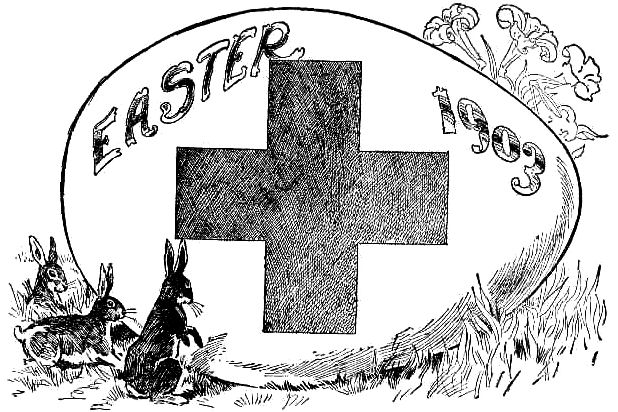
To Illustrate the principle of working a puzzle backward, according to the axiom that a good rule should work both ways, we introduce a seasonable problem wherein the object is to discover how to divide a cross into three pieces which can be fitted together so as to form a rectangle which is twice as long as it is wide. This, of course, is merely reversing the proposition of converting a rectangle or square into the form of a Greek cross, but, in that it presents the angles which must be fitted together, is not so difficult as the other proposition.
The following illustration show's the manner of dividing the Greek cross into three pieces which can be fitted together so as to form a rectangle twice as long as it is wide. The reversing of the proposition to the dividing of an oblong into a Greek cross would be more difficult, as no inkling of the angles to be fitted together is given.
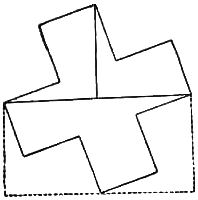
2. The Swastica Sign
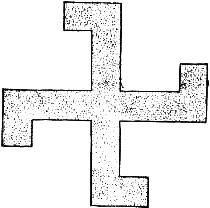
Here we have the ancient Swastica symbol, which, as set forth by Prof. Wilson of the Smithsonian Institute of Washington, in a great work with some five hundred illustrations from the Aztec mounds of Mexico, the pyramids of Egypt, the ruins of Troy and of Chinese and Indian lore, was one of the oldest signs of the human race to be traced through prehistoric ages.
It is the sign of “luck to you,” after the manner of the modem horseshoe, and is found on ancient temples, ruins and monuments in a way that leaves no room for doubt as to its correct interpretation, although the same can be traced for three thousand years as the Hammer of Thor, known in Masonry as the Master’s mallet, emblematical of power and decision. Again we find it described in musty old manuscripts as the fylfot, or four-footed, where it is shown as four legs branching out from the center, it is only a variation of the Monad sign, and in this form is known in China as “wan,” meaning “many long years to you.” Prof. Max Muller says the sign is found in ancient ruins and in excavations in every part of the globe, and must have been universally recognized. Is it a mere coincidence, or is it the discovery of a mystic secret, that we find when we take the emblem of the square and mark the sign of the Swastica in the center, that the four parts will form a perfect Greek cross, and if we mark it with the double Swastica, which was another ancient symbol, the four quarters will form two crosses! Theologians might involve a startling interpretation from these mysterious transpositions.
The Swastica puzzle may be cut and squared as follows:
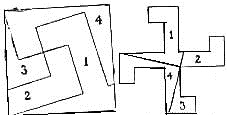
3.
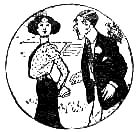
“I say, Alice, I just thought of an original conundrum,” said Charley, who thought he was getting on to a solid footing with Miss Lofty.
“Why is the moon like a suit of clothes?”
“Mr. Lightop.” replied the offended maiden, “I presume you claim that there is a man in both, but opinions might differ on that subject.” And Charley felt the sand slipping away from under his feet.
[Page 46]